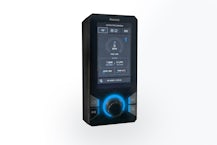- Customers
DACCs use CityJet with Pulsator System for Efficient Cable Duct Desilting Operations

We recently visited D&A Commercial Cleaning (DACCs) in Towcester to document the process they use to desilt cable ducts in preparation for new fibre optic cabling. One of the UK’s leading desilting companies, the firm utilises the powerful capabilities of Rioned's CityJet van-pack jetter to quickly remove compacted silt from long runs of cable ducting.
DACCS undertake duct desilting work for the UK's leading telecoms providers, supporting over 70 companies involved in the project to deliver nationwide gigabit broadband by 2025. The firm operates a fleet of two-man jetting teams covering the Midlands, Southern England and Wales.
On a bright morning in Towcester, Northamptonshire, we met up with DACCs Desilting Engineers Jack Brooks and Andy Johnson to better understand why Rioned equipment has proved to be a game-changer in the way they work.
Working alongside a Specialist Fibre Services team from the John Henry Group, the desilting team were there to clear approximately 150 metres of ducting ready for new fibre cabling to be installed.
Prior to the use of water jetting equipment, rodding systems and gully tankers were very much the go-to kit for creating access in the ducts for new cabling. The problem with manual rodding is that it is extremely difficult to push a rod through hardened silt that has become compacted like concrete over many years. Flushing the ducts with a gully tanker also proved a slow task and both processes meant that highly compacted sections of the cable duct would need to be dug up and cleared to create access for the new cables.

DACCs turned to Rioned for a solution that offered more power without risking damage to the existing cabling. Modifications were made to the standard 3000psi @ 16gpm CityJet water jetting unit, including the installation of the Riopulse pulsator or jump jet system for improved hose feeding and retrieval.
The pulsator unit vibrates the hose and minimises hose drag by reducing the surface contact on the duct. With the assistance of the specialist water jet nozzle, the hose is propelled further and faster into the duct. Further modifications comprised fitting a 250m 1/2” hose to the standard 180° pivoting hose reel, enabling easier access to the comms boxes.

Jack Brooks has been using the Cityjet for two years and says it has made a big difference: "On a daily basis, we’re desilting anything from 50 meters to around 200 meters over multiple sections. We do a lot of shorter sections in the city where it's more economical for us to use the jetter rather than get civils out and dig up the road.”
“The max distance we've been to is 279 meters on a single jet,” adds Andy Johnson. "The equipment is really powerful, and it’s surprising what it can shift.”
The team use a specialist nozzle to decrease the chance of any damage to the existing cabling in the duct.

“We're using the skirted nozzle,” explains Jack. “It’s got five backwards-facing jets, as well as a forward-facing jet. It works really well when you're using pulsating mode because the nozzle is able to push it straight through. As well as clearing out from a front, it's also pushing the debris back and washing it down the stream.”
The CityJet has emerged as a game-changing solution for desilting work, offering a range of features that make it highly effective in tackling even the most challenging desilting projects. The jetter has also been designed to use less water - up to 30% less than a conventional method - and is fitted with an eControl+ machine management system that allows the engineers to continually monitor essential system information such as the length of hose in the cable duct, the water levels and the pressure and flow.
Thanks to DACCs and engineers Jack and Andy for allowing us to witness their working processes first-hand.
For more information:
- Customers















